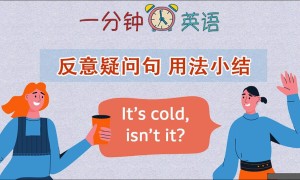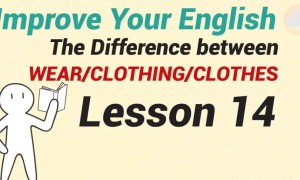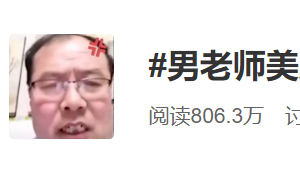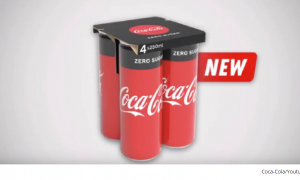今天 Susan 跟 Kate 下班经过超市,Susan 突然想起昨天洗澡的时候洗发精用完了,所以 Kate 陪着她走进超市准备采买所有需要的日用品。
Susan: Kate, I need to go to the supermarket because I just remembered that I ran out of my shampoo last night.
Susan: Kate,我突然想起我昨天洗发精刚好用完,我要去一下超市。
Kate: Sure. Let’s go to the supermarket together.
Kate: 好啊!那我们一起去吧!
Susan: Do you know where they put the shampoo? I’m really not familiar with this supermarket.
Susan: 你知道他们的洗发精放在哪里吗?我对这间超市超不熟的。
Kate: Hmmm…I’m not sure either. Let’s just ask the cashier.
Kate: 嗯…我也不确定欸,问问看店员好了。
Susan: Okay. Excuse me, I’m looking for shampoo. Where can I find it?
Susan: 好啊,不好意思,请问洗发精放在哪里?
Cashier: Well, it is in the body and beauty section, down that aisle.
店员: 在美妆美体区,在这个走道的最后。
Susan: Great. Thank you so much.
Susan: 太好了,谢谢。

Cashier: No problem.
店员: 不客气。
run out of (phr.) 用完
这个片语非常实用,我们通常都是用完东西才会去超市补货,而「用完」的英文就是 run out of,后面直接接用完的东西。注意 run 的动词三态为 run-ran-run。
Oh my god! I ran out of my foundation, I can’t do my makeup today! How can I go out?
我的天啊!我的粉底液用完了,我今天不能化妆!我要怎么出门?
Where can I find…? 我在哪里可以找到…?
去超市难免都有找不到东西的时候,这时候我们就可以用这句问店员喔!你可以先跟他说你在找什么,再问他在哪里可以找到,但在问话之前,可以先说 Excuse me. 来引起对方注意,举例如下:
Excuse me. I’m looking for perfume. Where can I find it?
我在找香水,你可以告诉我我在哪里可以找到它吗?
section (n.) 区
超市里商品种类很多,所以通常会依照商品属性分区,而这里的「区」英文可以用 section (部分) 表示。
Let’s go to the seafood section to get some fresh fish.
我们去海鲜区买一些新鲜的鱼吧。
aisle (n.) 走道
超市除了分区之外,还有分走道,而通常走道会以编号区分。所以如果你听到店员告诉你 aisle 2 的话,就代表是第二个走道。另外注意这个字的 s 不发音。
You can find the fruit section in the next aisle.
你可以在下一个走到找到水果区。
买完该买的东西后,Susan 跟 Kate 前往结帐区,准备结帐区,结果发现…
Susan: Wow! This supermarket is so advanced! They have self-checkout! Have you ever tried it before?
Susan: 哇!这间超市很先进!他们有自助结帐,你之前有用过吗?
Kate: No, never. Do you want to try it today?
Kate: 从来没有,你今天想试试看吗?
Susan: Sure. Let’s do it.
Susan: 好啊,走吧!
Cashier: Hi, do you need help?
店员: 嗨,需要协助吗?
Susan: Yes, how should I operate this?
Susan: 是,我应该如何操作这个呢?
Cashier: First, if you have a membership card, you can scan it here.
店员: 首先,如果你有会员卡,你可以先放在这里感应。
Susan: Okay. Then, I can start to scan the barcode on all my groceries, right?
Susan: 好的,那感应完之后,我是不是就可以开始刷我要买的东西条码?
Cashier: Yes, once you finished scanning, you can choose the type of payment, either cash or credit card.
店员: 是的,等你刷完之后,你就可以选择付款方式,现金或是刷卡。
Susan: Cool. Thanks for your help. I think I can handle this.
Susan: 好的,谢谢你的帮忙,我想我应该会操作了。
Cashier: Anytime.
Cashier: 不客气。
self-checkout (n.) 自助结账
check out 为动词片语,指的是「办理退房手续」或是「在超市结帐离开」,合在一起 checkout 就变成其名词,加上字首 self- (自己) 就变成了「自助结帐」。随着时代的进步,超市现在的结帐方式已经不局限于传统的人工结帐,还有自助结账,而这类型的结帐方式国外也是相当普及。所以未来如果有机会在国外买东西也可以尝试看看 self-checkout。
Self-checkout is getting more and more popular nowadays.
自助结帐近年来变得越来越普及。
membership card (n.) 会员卡
你是不是也跟小 V 一样有各种会员卡呢? member 为名词,「会员」的意思,加上表关系的字尾 -ship 就变成了「会员身分」,再与 card (卡片) 结合,就成了「会员卡」。
You can get a special discount if you have our membership card.
你如果有会员卡的话可以享有特别折扣。
barcode (n.) 条码
商品上的条码英文应该怎么说呢?就是 barcode!而刷条码的动词可以用 scan,原意为「扫描、感应」。
Where is the barcode on this item? I couldn’t find it.
这件商品的条码在哪里?我找不到。







